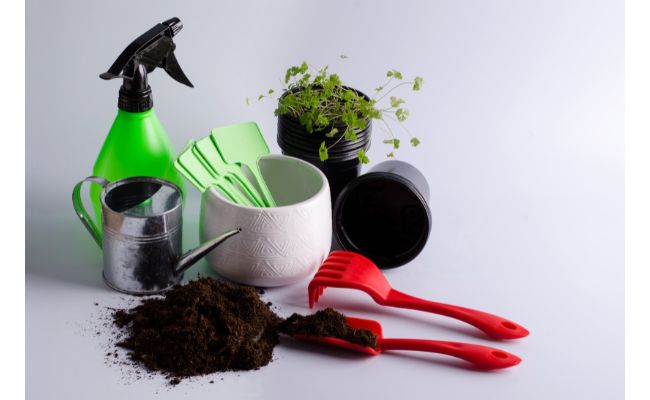10 Solutions for Rising Greens Indoors Effectively
Many gardeners certainly not think about rising greens indoors. Nevertheless with the exact steadiness of sunshine, water, and warmth, you can develop lettuce, tomatoes, peppers, and loads of totally different meals crops inside year-round in a loyal develop room and even on a sunny windowsill. Must you’re fast on exterior space or simply want to reap homegrown greens in winter, these 10 options will present you methods to start and maintain a thriving vegetable yard indoors.
1. Choose the Correct Vegetation
You’ll develop indoor greens from seed or transplant compact yard vegetation into pots to hold indoors for overwintering. Nevertheless in the event you want your indoor yard to be successful, choose vegetable vegetation that maintain comparatively small, resembling bush-type or dwarf vegetation. Pumpkins and totally different crops with sprawling vines can shortly overwhelm a small space, nonetheless root crops, determinate tomatoes, inexperienced onions, chili peppers, and leafy greens are all small enough for indoor rising.
2. Select Roomy Pots
The pot dimension for rising indoor greens depends upon the type of greens you choose to develop, nonetheless it’s very important to supply adequate space for his or her explicit needs. For instance, a single tomato plant should be grown in a pot that’s a minimal of 5 gallons in dimension, whereas a 1 gallon container can accommodate about 4-6 carrot vegetation. Terracotta pots, develop baggage, and meals grade plastic buckets can all be used to accommodate indoor vegetable vegetation as long as these containers have a great deal of drainage holes.
3. Use a Prime quality Potting Mix
Yard soil is just too dense for container rising and will set off drainage factors in indoor setups. Instead, select a top quality potting mix supposed for meals vegetation or make your particular person DIY combine by mixing collectively equal parts compost, vermiculite, and coconut coir. Replenish your rising containers collectively along with your potting combination of choice and go away about 1-2 inches of space between the soil line and the rim of your pot to stay away from overflow factors everytime you water.
4. Current Ample Gentle
Making certain that your greens acquire adequate mild indoors is probably going one of many trickiest parts about indoor rising, nonetheless it is doable. Most greens are full-sun vegetation that require a minimal of 8 hours of direct mild to develop exterior; nonetheless, vegetation like tomatoes sometimes need 16-18 hours of good mild to fruit inside. A sunny, south-facing window might current adequate mild for vegetation like lettuce, nonetheless a develop mild is a ought to for tomatoes, peppers, and totally different fruiting vegetation.
5. Water Accurately
Water normally doesn’t evaporate as shortly indoors as a result of it does in an outdoor yard, which suggests you typically gained’t should water indoor vegetation as loads. A wonderful rule of thumb is to examine the soil collectively along with your finger sooner than watering and to solely water your vegetation when the best 1 inch of potting mix feels dry. Must you normally overwater, a soil moisture meter may assist data your watering observe.
6. Fertilize Sparingly
Must you’re merely overwintering tomatoes and totally different yard vegetation indoors and don’t have any intention of harvesting veggies in winter, it’s best to stay away from fertilizing your vegetation the least bit. Nevertheless in case you’re rising greens for harvest, tomatoes and totally different heavy-feeding vegetation must be fertilized about as quickly as every 2-4 weeks, whereas leafy greens and lettuce could also be fertilized additional sparingly. Take care to not overfertilize your vegetation and go for liquid pure fertilizers, which can be a lot much less extra prone to assemble up in container gardens than granular merchandise.
7. Check for Pests
Pests are sometimes not as problematic indoors, nonetheless they may nonetheless occur. To stay away from factors, check your greens fastidiously for indicators of pests and take into consideration spraying exterior vegetation preventatively with an pure insecticidal cleansing cleaning soap spray sooner than bringing them indoors for overwintering. Sticky “honeydew” residue, yellow stippling on plant leaves, and distorted leaf progress can all be indicators that pests have invaded your indoor yard.
8. Rotate Pots Recurrently
Vegetation develop in course of the sunshine and indoor greens can become lopsided in case you don’t rotate their pots typically. Irrespective of whether or not or not you’re rising veggies beneath develop lights or in a sunny window, it’s good observe to rotate your plant pots 1 / 4 flip every 1-2 weeks. This will likely assure your veggies develop their best and produce straight and sturdy stems.
9. Prune As Wished
Some greens gained’t should be pruned the least bit in indoor setups. Nonetheless, pruning may be wished in the event you want to develop greater vegetation, like tomatoes, in your home. Pruning methods will differ counting on the types of vegetation you’re rising, nonetheless it’s sometimes good to prune away yellow leaves, broken branches, and wayward stems.
10. Hand-Pollinate Flowers
Fruiting vegetation like tomatoes, cucumbers, and peppers are pollinated by bugs or the wind in exterior gardens. Nevertheless in the event you want to develop these vegetation indoors, you’ll should pollinate their flowers by hand to ensure your vegetation produce an excellent harvest of fruit. Fortuitously, hand-pollinating only a few indoor vegetation is a relatively straightforward course of and it could be achieved by transferring pollen between flowers with a cotton swab or small paint brush.




:strip_icc()/Amaryllis-on-mantle-53702e9e0e724fff8224f5a1d82503b0.jpg?w=1200&resize=1200,0&ssl=1)
:strip_icc()/BHG-Best-Radish-Companion-Plants-3QXgI6KOKF0A7LNzTtMkYM-73ddb331c8ea4691924a5b52af37c69e.jpg?w=1200&resize=1200,0&ssl=1)
:strip_icc()/BHG-Mini-Succulents-1222750058-6236dd5e7ca346a3bf9f65c8705b635e.jpg?w=1200&resize=1200,0&ssl=1)